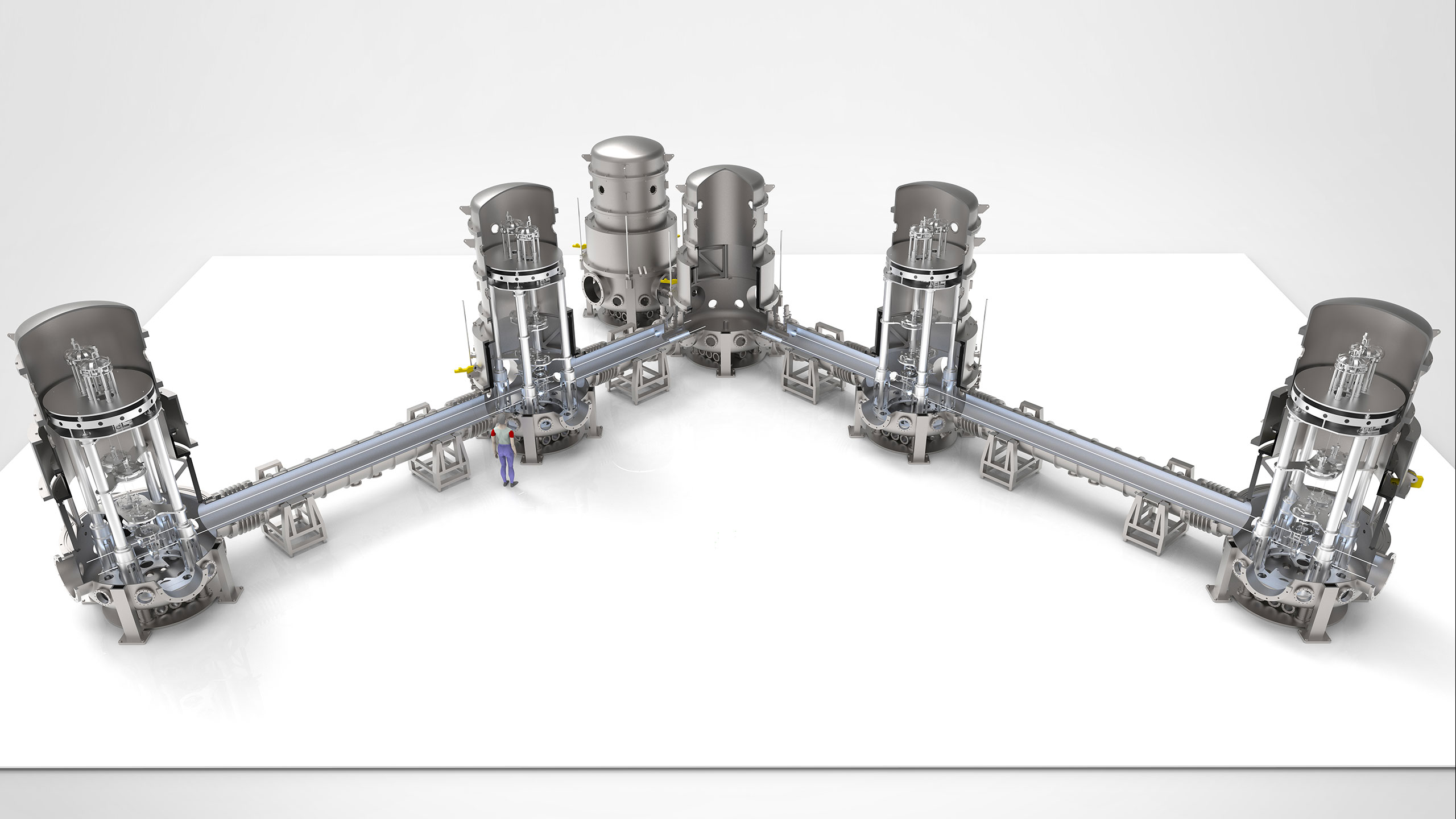Technological Challenge

The Einstein telescope is a highly complex instrument with thousands of control signals needed to keep the interferometers at their optimal working point. Many of the controls are non-linear, coupled to other channels and affected by noise. At low frequencies, the current generation of interferometers is limited by the noise generated by the controls. New algorithms based at least in part on AI methods are needed to avoid such a limitation for the Einstein telescope. Such control algorithms are also suitable for use in other, highly complex apparatuses / instruments.
The performance of the current, second generation of interferometers is not sufficient. For the purposes of the new, third generation of GWDs, it is therefore necessary to substantially increase the performance of the systems.
Relation to the Einstein Telescope
Relation to the Einstein Telescope
Advanced control algorithms are used to control and monitor the interferometers. Control noise must be reduced at low frequencies. A qualitative feedback on the stability of the interferometers is expected from the control.
Current interferometers are disturbed by singular events (so-called glitches, some are results of mini-earthquakes others sources are unknown). The interferometers loose their working point and it takes a substantial amount of time to get them back into operation. By proactively responding to disruptions – using a safety point allows a quick return to the normal range – telescope downtime can be minimised.
Innovation
- Better handling of non-linear controls
- Ability to handle exceptional events (glitches, mini-earthquakes) – if the operating point is lost, the use of a second control stage enables a faster return to the normal range.
- Massive processing of sensor data in real-time (reconstruction of seismic waves) and special requirements due to data complexity:
- To enable real-time and high speed processing, the implementation of AI methods in FPGA (Field Programmable Gate Array) systems is required
- AI solutions are required due to the high number of signals and control options as well as their correlations with each other.
- Extraction of a quantitative status reference from the controls (estimate of the current noise-performance), i.e. the current control performance and quality must be derived from the control signals.
- Less noise introduced by the controls (minimising sensor noise is not part of this technology, but part of sensor development!)
Industrial relevance and further application fields
The use of a second control level via safety points can be transferred to other applications, for example to industrial plants in the event of voltage fluctuations in the grid. Likewise, when assessing the current control quality, transferability to production plants is conceivable by making it clear when a plant was well regulated.
By implementing AI hardware via FPGA systems, the systems can also be used for other AI problems. The findings of a wave-field reconstruction are in principle transferable to areas that deal with waves of different types (e.g. sound), for example in the regulation of acoustic systems (event acoustics, concerts/music events).
References
For further information and more details about this technology field, please check the following Einstein Telescope Design Reports.
E-TEST Conceptual Design Report:
Einstein Telescope Conceptual Design Report:
Contact to the Einstein Telescope ecosystem
Are you active in this field of technology? Do you have an innovative approach to meet the requirements for Advanced Control Algorithms? Then take note of our tenders, join our challenges or simply get in contact with us. Furthermore, you can take a look at the mapping displaying the ET-relevant competencies in the EMR-Region. If you would like to be part of this mapping, please contact the business development managers.
Business development contacts
Peter Gier
AGIT DE – p.gier@agit.de
Matthias Grosch
NMWP.NRW DE – matthias.grosch@nmwp.de
Michel Stassart
Skywin BE – michel.stassart@skywin.be
Annick Pierrard
ULiège BE – a.pierrard@uliege.be
Maxime Corvilain
POM Limburg BE – maxime.corvilain@pomlimburg.be
René Kessen
LIOF NL – rene.kessen@liof.nl
Scientific contacts
Conor Mow-Lowry
Vrije Universiteit Amsterdam (NL) – c.m.mow-lowry@vu.nl


